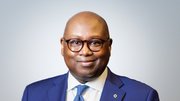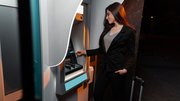News
CASE STUDY: Planning, details key to audio ATM rollout
IRB Consulting has helped a $40 billion New England area bank roll out more than 180 audio-enabled ATMs this year.
December 15, 2003
The following case study was sponsored by IRB Consulting Group.
Making an ATM "speak" can be a complex process -- but one that will become essential to all financial institutions and operators of ATMs in the United States, according to Timothy Hoyle, a senior consultant with IRB Consulting Group.
Hoyle's company is assisting a large Mid-Atlantic and New England area bank with more than $40 billion in assets with its rollout of audio-enabled ATMs. Hoyle expects the majority of that Bank's 1,000 ATMs will "speak" by the spring of 2005 -- at roughly the same time MasterCard has mandated that all ATMs must be capable of running Triple DES encryption.
After discussions with advocacy groups for the visually impaired, Hoyle said, the bank agreed to pilot 32 audio-enabled ATMs in the fall of 2002. Shortly afterward, he said, IRB Consulting Group was asked to develop a plan to mitigate the costs of this large audio rollout.
The resulting plan outlined the changes required to implement audio, place ATMs on the bank's wide area network and implement Triple DES at the same time. In addition, these same capabilities would be implemented as a part of the bank's regular ATM attrition program.
Some upgrades - a faster processor and more memory -- are required for both audio capability and Triple DES. "You're generally going to need a Pentium II or better processor and at least 256 megabytes of RAM," Hoyle said.
Other key components include a sound card (for audio) and an Encrypting PIN Pad (EPP) for Triple DES.
Hoyle said that the bank also decided to make some infrastructure changes from which it expects to reap financial benefits, chiefly an upgrade to an Internet Protocol (TCP/IP) network at its branches, again timed to coincide with Triple DES deadlines. The switch will save his client "millions of dollars" a year, he said.
With a project as large as this, Hoyle said it was essential that his client be able to leverage the impact of the changes. One such benefit that resulted from the implementation of audio was a streamlining of the transaction sets used by the bank.
"There were hundreds of ATM images in use at the bank," Hoyle said. With the implementation of voice guidance, the bank will offer more consistency to its customers across the network. Working with Concord EFS, which drives the bank's ATMs, Hoyle said the bank reduced its possible screen configurations from more than 100 to roughly a dozen.
Evaluating the technological "big picture" while trying to keep costs to a minimum was crucial, said Hoyle, who estimated that the upgrade's final cost will be more than $10 million.
IRB Consulting Group has helped its client roll out more than 180 audio-enabled ATMs since last December and plans to add another 150 or more in 2003. By the end of 2005, he expects the bank will have at least one audio enabled ATM in each of its approximately 600 branches and at 170 non-branch locations.
Catching the WAV
The ATMs will "speak" both English and Spanish. Offering two languages will become less complicated, Hoyle said, when the bank introduces text-to-speech software, currently expected in early 2004. Today, voice guidance is provided through the use of WAV files, a process that presents management and implementation challenges for the bank, he said.
WAV files do not support dynamic content changes; a visit to the ATM is required to make any change, including one as simple as a surcharge amount. "That's a big deal when you're talking about 1,000 machines," Hoyle said.
Text-to-speech software uses a computer-generated synthetic "voice" rather than a human one. While the sound isn't as natural, it offers a less costly and simpler alternative to WAV files, Hoyle said. Changes can be made dynamically and implemented without a visit to each ATM.
Hoyle recommended the bank use text-to-speech when it introduced audio, but Concord does not yet support it for its primary ATM vendor, Diebold. Kevin Carroll, Concord's director of ATM services, said additional development is required because Diebold ATMs will continue to use states-and-screens in a Windows environment. Concord expects to offer support for text-to-speech on Diebold machines by the end of 2003.
In the interim, Hoyle noted that the bank decided to have Concord use text-to-speech software to generate WAV files. This resulted is a more natural-sounding voice that can run in an OS/2 environment -- but without the costs of hiring human "talent" and recording them in a studio.
Concord develops a "script" of ATM transactions for its clients, Carroll said, then runs it through a text-to-speech engine and produces a CD of the WAV files. The client reviews the CD in either their own test lab or Concord's and makes any necessary changes before a final version is produced.
Picturing it with words
Both Hoyle and Carroll said that writing scripts is a challenge, largely because they must be modified for each make and model of ATM in a bank's network. "The cash presenter is in one place on a Diebold 1062 and in another on a 1072," Hoyle said.
Script writing presented more fundamental difficulties as well. "We'd start out saying, 'Insert your card into the card reader' and then realize that the user didn't know where the card reader was," Hoyle said.
At the suggestion of various advocacy groups for the visually impaired, Hoyle noted that the bank decided to use the concept of a clock face. Vendors created drawings for each of their ATM models, showing where the peripherals would appear on a clock face: card reader at one o'clock, 6 inches from the keypad, for example.
The logistics
Upgrades for both audio and Triple DES present a major logistical challenge, Hoyle said. Updating site information, including which make and model of ATM was deployed at each location was critical. Diebold and NCR, the bank's ATM vendors, helped with site visits. "What we had on file wasn't always accurate," Hoyle said.
IRB Consulting also required vendors to ensure that service personnel were adequately trained on adding audio capability. Early upgrades took up to 10 hours, but the time was reduced to three to four hours following an increased emphasis on training, Hoyle said.
Service technicians must contact a member of the bank's ATM group before work begins and when it is completed so that the bank can monitor each upgrade. Working with the bank and its ATM vendors, IRB Consulting Group developed a checklist to ensure that an ATM's audio capability is in good working order. When the technician completes his work, a branch employee puts on an audio headset and runs through voice-guided transactions with the checklist - before the technician leaves.
Early upgrades allowed the project team to work out the bugs -- not scheduling work on Fridays, for example, to lessen the chance of any problems occurring over a weekend. The bank now has it down to a near-science, Hoyle said. "We've got five or six upgrades scheduled for each day this fall."
To download a PDF version of this article, click here:
http://www.atmmarketplace.com/pdf/IRB_CaseStudy_03.pdf
Included In This Story
Diebold Nixdorf
As a global technology leader and innovative services provider, Diebold Nixdorf delivers the solutions that enable financial institutions to improve efficiencies, protect assets and better serve consumers.














